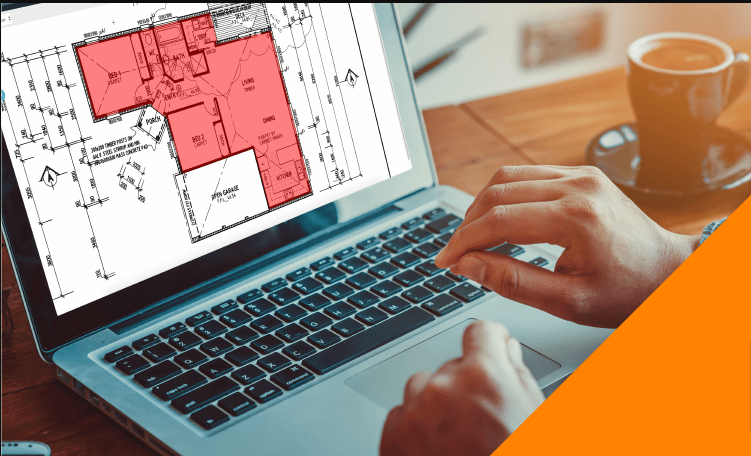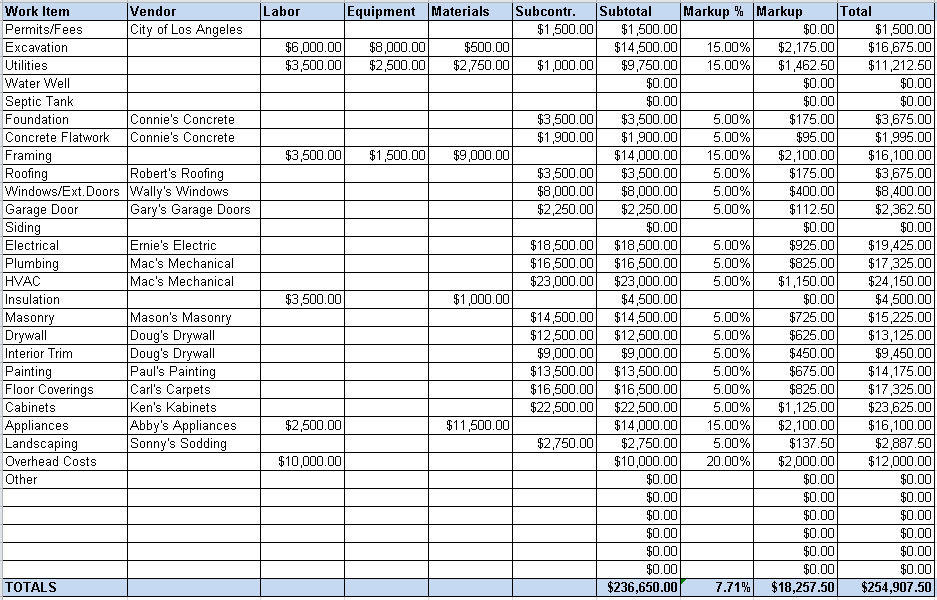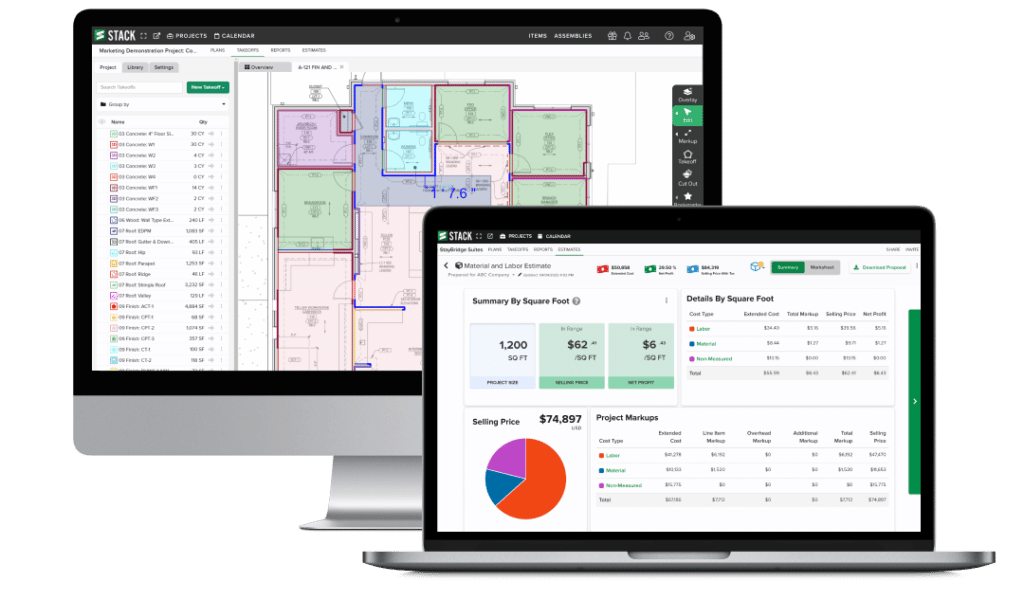The construction industry has gone through many innovative changes, and in recent years, technology has taken centre stage, transforming how projects are conceived and executed. Among the numerous technological advancements, easy estimate software has emerged as a pivotal tool, reshaping the landscape of residential construction project management.
This comprehensive analysis delves into seven prominent building estimate software solutions available in 2023. Specifically designed for construction contractors, cost estimators, and professionals engaged in house estimating and construction estimating budgets.
These software options offer a wide array of features. From precision-enhancing quantity takeoff to seamless collaboration tools and immersive 3D visualization capabilities, these solutions are redefining how construction projects are planned and realized.
1. ProEst
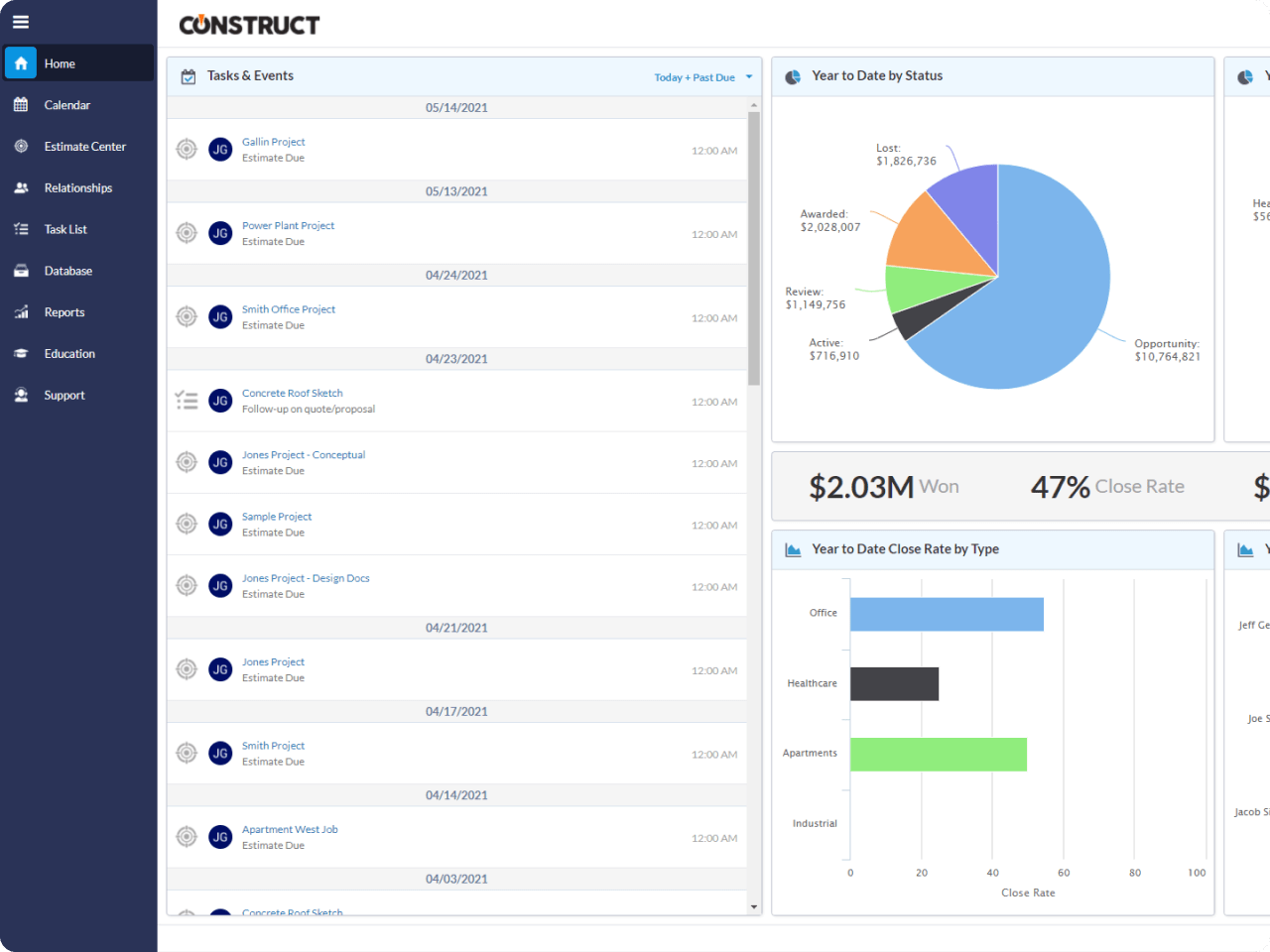
Main Features: ProEst, a cutting-edge construction software, is an easy estimate software that provides a full range of features that are meant to improve precision and effectiveness. Users may extract precise measurements from designs thanks to its sophisticated 3D takeoff capabilities, and its quantity takeoff tool enables careful assessment of the materials needed.
The integration of ProEst with other project management solutions promotes real-time collaboration and enables seamless team communication. Its large material cost database, which enables users to produce estimates with impressive precision, is a priceless asset. Additionally, ProEst effortlessly interfaces with CRM and accounting software platforms, streamlining client and financial management.
Cost: ProEst’s price varies according to the size of the business and the particular features needed. Interested parties are urged to get in touch with ProEst’s sales team for exact price information.
Pros: ProEst is a great choice for professionals looking for accuracy and efficiency thanks to its sophisticated features, real-time collaboration capabilities, comprehensive material cost database, and integration choices.
Cons: Although ProEst has excellent capabilities, the price may be prohibitive for smaller companies with tighter budgets.
2. Clear Estimates
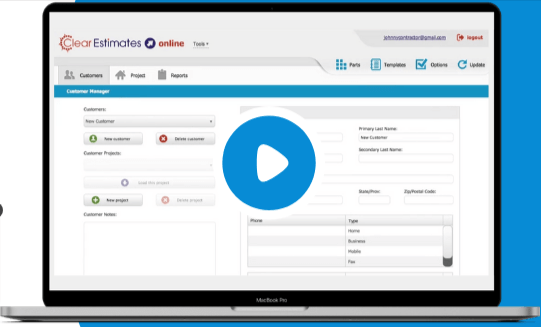
Main Features: With its straightforward features and user-friendly UI, Clear Estimates stands out from the competition. The provision of pre-built templates customized for various construction projects is one of its notable features. This building estimate software speeds up the estimation process, and these templates enable even people with no prior experience to participate.
Users of Clear Estimates may easily access the most recent pricing data for materials thanks to the integration of cost databases into the software. The software also enables users to alter their estimates in order to meet the particular needs of each project.
Cost: With plans starting at roughly $59 per month, Clear Estimates has a subscription-based pricing approach.
Pros: Clear Estimate is an appealing solution for individuals who prioritize simplicity without compromising accuracy because of its user-friendly interface, pre-built templates, and cost databases.
Cons: Clear Estimates may not have all of the cutting-edge capabilities seen in other software packages for projects with intricate requirements.
3. PlanSwift
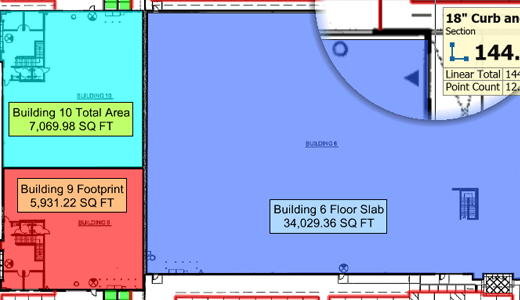
Main Features: Construction takeoff and estimating software leader PlanSwift is renowned for its accuracy and adaptability. Users are given the ability to make digital takeoffs directly from plans using the software, turning these measurements into thorough estimations. An important element of PlanSwift is its 3D takeoff tool, which enables users to see the project in three dimensions for better project comprehension. In order to provide seamless data sharing, the software also allows interfaces with a number of other software products. Additionally, PlanSwift creates thorough reports that offer priceless information for making decisions.
Cost: PlanSwift has a variety of price tiers to meet various demands. The starting price for a single-user licence is about $1,595.
Pros: PlanSwift is an essential tool for professionals looking for accuracy and efficiency in their estimating process because of its powerful takeoff capabilities, 3D visualization, and integration options.
Cons: For smaller companies with tighter budgets, PlanSwift’s price may be exorbitant.
4. Sage Estimating

Principal Features: Sage Estimating stands out as a comprehensive solution with a range of features specially designed for cost estimation in the construction industry. Advanced takeoff choices that let users extract minute data from plans are among its primary features. Users of the software can modify templates to meet unique project requirements, increasing flexibility. Its seamless integration with Sage’s larger portfolio of project management products, which promotes collaboration across multiple areas of a project’s lifecycle, is a noteworthy asset. Its utility is further enhanced by collaboration features and comprehensive reporting skills.
Cost: Interested parties are urged to get in touch with Sage directly to get detailed pricing information on Sage Estimating.
Pros: Sage Estimating is a strong choice for challenging construction projects thanks to its extensive feature set, integration potential, and customization options.
Cons: Due to its sophisticated functions, Sage Estimating may require new users to master it more quickly.
5. UDA Construction Suite


Main Features: Estimating capabilities are a standout feature of the comprehensive set of construction management tools provided by UDA ConstructionSuite. The program streamlines the estimation process by giving users access to cost databases and project templates. Enhancing project management coherence through integration with other UDA tools enables frictionless data sharing. Offerings from UDA ConstructionSuite appeal to both small and large organizations, demonstrating their scalability and versatility.
Cost: Depending on the version selected and the necessary features, UDA ConstructionSuite’s price varies.
Pros: UDA ConstructionSuite is an enticing alternative for organizations of various sizes because of its full array of construction management tools, customization choices, and adaptability.
Cons: Some capabilities of UDA ConstructionSuite may be unnecessary for construction contractors looking for only estimated functionality.
6. STACK Estimating
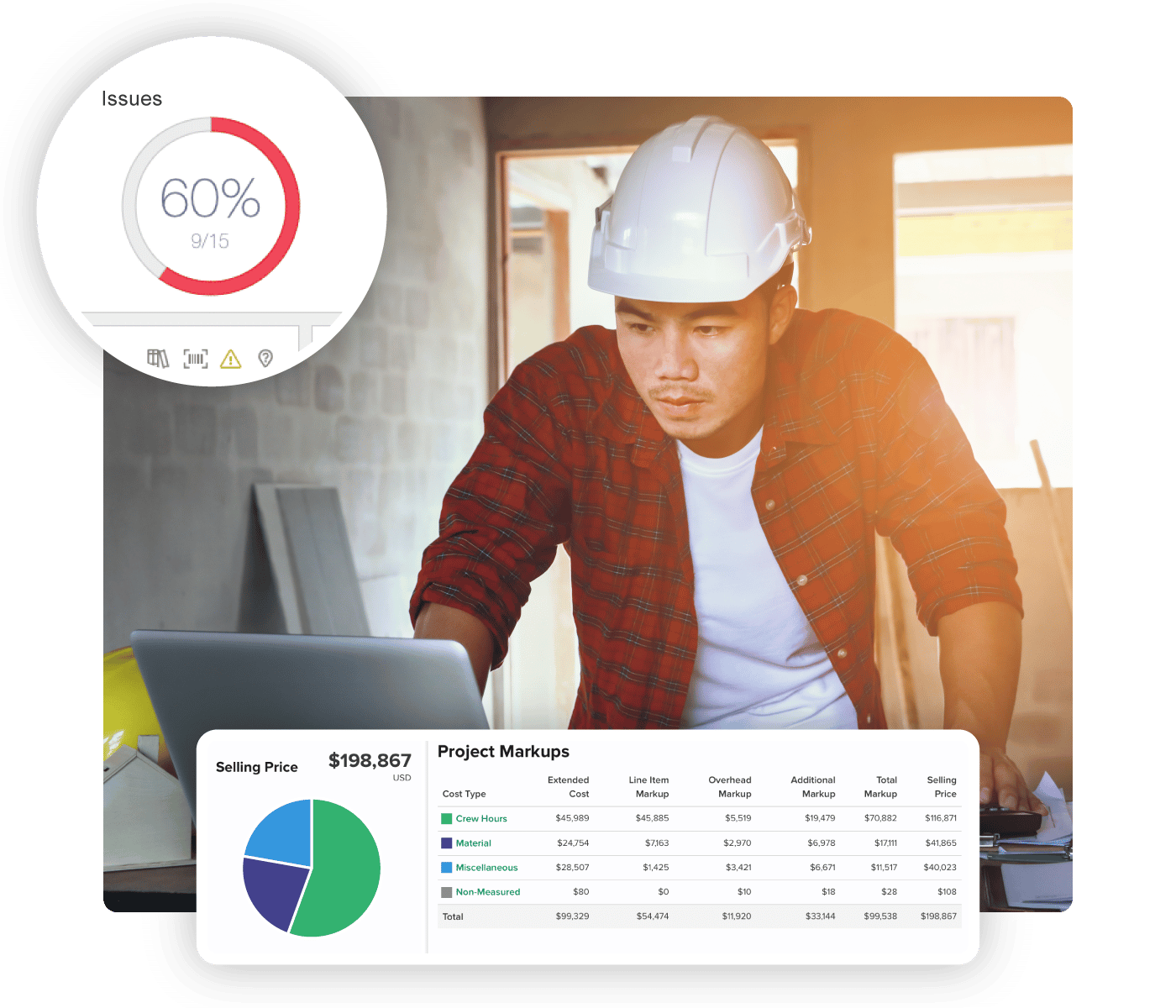
Main Features: As a cloud-based solution, STACK Estimating has established a market for itself by enabling customers to access the software from any location with an internet connection. Strong takeoff and estimation capabilities, along with real-time collaboration tools, are the software’s distinguishing advantages. Notably, STACK’s 3D takeoff capability gives consumers the ability to see the project’s breadth in greater detail. The software’s appealing user interface and support for mobile apps enhance its usability.
Cost: It is encouraged that interested consumers contact STACK’s sales team for exact price information.
Pros: STACK is a dynamic solution for contemporary construction teams because to its cloud-based architecture, 3D takeoff capabilities, collaboration tools, and compatibility with mobile apps.
Cons: Depending on usage volume and the desired feature set, costs may escalate.
7. Buildertrend
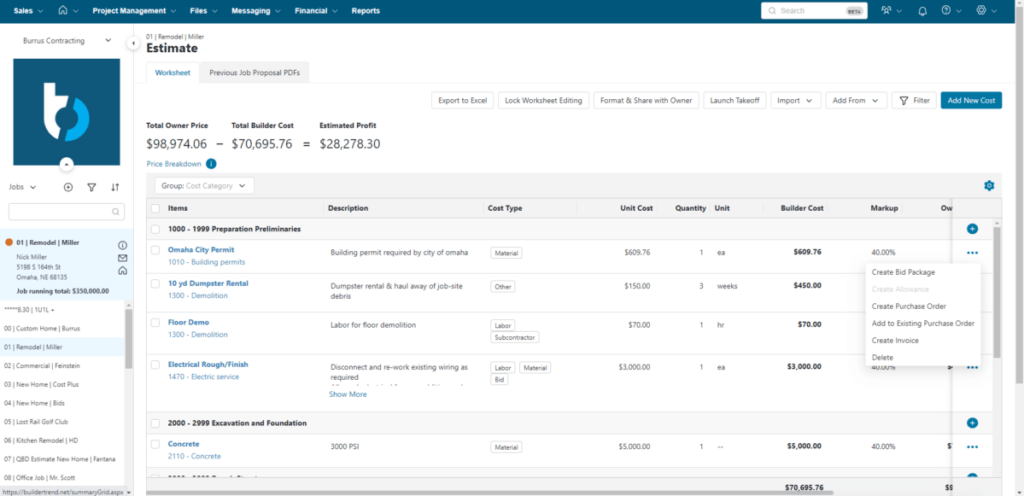
Main Features: Buildertrend, while largely known as project management software, also provides fundamental estimating tools that are tailored to the requirements of construction industry specialists. The program streamlines the estimation process by giving users access to cost databases and project templates. Buildertrend is notable for integrating with other project management software to produce a complete project coordination solution. Buildertrend seeks to streamline the estimation process while providing a suite of more comprehensive project management features to smaller contractors.
Cost: Buildertrend uses a subscription-based pricing approach, with prices based on the size and feature needs of the business.
Pros: Buildertrend is positioned as an all-in-one solution for smaller construction enterprises because of its complete approach to project management and its fundamental estimating features.
Cons: Buildertrend could not have the capability required for projects requiring complex estimation tools.
Conclusion
With the introduction of user-friendly and feature-rich building estimating software systems, the field of residential construction software has undergone an irreversible transformation. Each software has a distinct set of advantages that are intended to meet a variety of company requirements, from streamlined simplicity for smaller contractors to sophisticated functionality for larger organizations.
As we come to a conclusion on this extensive examination, it is clear that these software options are influencing how construction estimating and project management will develop in the future. The accuracy, efficiency, and transparency of the estimation process have increased because of the introduction of features like 3D takeoff, quantity takeoff, and collaboration tools, which have ultimately enhanced project outcomes.
It is impossible to overestimate the importance of correct estimations in the building. A successful project is based on accurate estimations. They provide direction for planning, allocating resources, setting budgets, and meeting deadlines. Construction professionals today have access to technologies that speed the estimating process, reduce errors, and improve team communication due to the development of technology-driven solutions like the ones discussed here.
There are several solutions available in the realm of construction estimating software to meet different needs. These solutions will probably advance in sophistication as technology develops more, giving building workers more abilities and knowledge. The implementation of these digital solutions aims to ensure the success of every construction project, from conception to completion, rather than just embracing innovation.
Construction professionals may negotiate the complexity of the industry with assurance, accuracy, and efficiency by incorporating these tools into their workflows. These software solutions are at the vanguard of this transformative journey, which is shaping the future of home building through the integration of cutting-edge technology.


